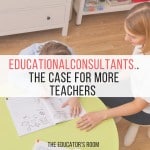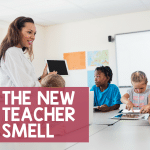
One of the most engaging and sometimes infuriating side effects of being a teacher is that we see connections to teaching in the world around us all the time. We are constantly aware of how a trip to the museum or the beach could be a field trip, how TV shows portray school and teachers (not well) and often the same is true of what books we read.
I didn’t set out to read, “How to Fly a Horse: The Secret History of Creation, Invention, and Discovery” by Kevin Ashton with connections to teachers in mind. But once I got into the book, I couldn’t think of anything else.
The book essentially critiques the culture of genius glorification that portrays creativity and creation as originating from a flash of genius “eureka” moment. Ashton is a technology entrepreneur who coined the term and put into practice the “Internet of Things” in demonstrating how objects like products in a store or appliances in a home could be connected to computer systems. In the preface Ashton directly contradicts the “eureka model” when he describes the creative process: “Creators spend all their time creating, persevering despite doubt, failure, ridicule and rejection until they succeed in making something new and useful.”
Ashton is a scientist and entrepreneur so his field of creators leans toward engineers, doctors and psychologists as opposed to novelists or singers, though there is a fascinating chapter about the painter Kandinsky. This is an insight that would be well-worth sharing with students: creativity infuses more work that the arts. Architects, nurses and even teachers are creative, not just artists. Indeed, as Ashton writes in the first chapter,“Creating is not extraordinary, even if its results sometimes are. Creation is human. It is all of us. It is everybody.”
The book describes how the systematic sidelining of early female scientists like Rosalind Franklin and Marie Curie slowed the progress of medical science and cost lives. Ashton’s inclusive view of creativity makes explicit connections to how young children learn in his discussion of the “marshmallow challenge” wherein participants must build a structure with spaghetti and masking tape that can hold a marshmallow. Ashton describes how the inventors of the marshmallow challenge found that the best “marshmallow engineers” are almost always young children of kindergarten age. Ashton points out “Young children win because they collaborate spontaneously.” Ashton goes on to discuss how “At school, most work is done individually and quietly…The message is clear: you can not do and talk at the same time.”
Ashton’s observations support the practices of teachers who practice community-building, positive interactions, and peer learning. It made me consider my own turn-and-talk strategies and how to truly foster a creative atmosphere among my students. Teachers can model these interactions, role-play with students and make collaborative conversations and projects part of the day-to-day practice of the classroom.
“How To Fly a Horse” is aimed at the business community but it’s based in respect for (and fascination with) the possibility of creativity in all people. It can provide a new and valuable perspective for teachers and a theoretical basis for bringing creativity back into the classroom. How can we have students and teachers be more creative?






